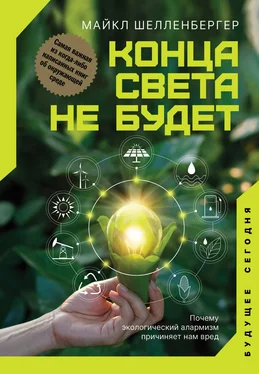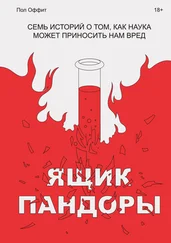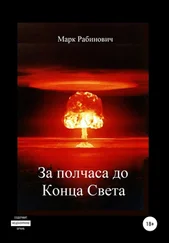Christine Figgener (sea turtle biologist) in conversation with the author, November 6, 2019.
Marydele Donnelly, “Trade Routes for Tortoiseshell,” State of the World’s Sea Turtles (SWOT), Report Volume 3, February 1, 2008, https://www.seaturtlestatus.org/articles/2008/trade-routes-for-tortoiseshell. Associated Press, “Japan Agrees to End Endangered Hawksbill Turtle Imports After ’92,” Los Angeles Times, June 19, 1991, https://www.latimes.com.
Tina Deines, “Endangered hawksbill turtle shell trade is much bigger than scientists ever suspected,” National Geographic, March 27, 2019, https://www.nationalgeographic.com.
Christine Figgener (sea turtle biologist) in conversation with the author, November 6, 2019.
“World’s Biggest Producer of Plastic to Curtail Its Use,” Bloomberg News, January 19, 2020, https://www.bloomberg.com
Elizabeth Kolbert, The Sixth Extinction: An Unnatural History (New York: Henry Holt & Company, 2014), 266–267.
“World Is ‘on Notice’ as Major UN Report Shows One Million Species Face Extinction,” UN News, May 6, 2019, https://news.un.org/en/story/2019/05/1037941. “UN Report: Nature’s Dangerous Decline ‘Unprecedented’; Species Extinction Rates ‘Accelerating,’ ” Sustainable Development Goals, May 6, 2019, https://www.un.org/sustainabledevelopment/blog/2019/05/nature-decline-unprecedented-report.
“UN Report: Nature’s Dangerous Decline ‘Unprecedented.’ ”
“UN Report: Nature’s Dangerous Decline ‘Unprecedented.’ ”
Kolbert, The Sixth Extinction.
Luke J. Harmon and Susan Harrison, “Species Diversity Is Dynamic and Unbounded at Local and Continental Scales,” American Naturalist 185, no. 5 (2015): 584–93, https://doi.org/10.1086/680859. See also Thomas J. Stohlgren, John D. Barnett, and John T. Kartesz, “The Rich Get Richer: Patterns of Plant Invasions in the United States,” Frontiers in Ecology and the Environment 1, no. 1 (2003): 11–14, https://doi.org/10.2307/3867959. Scientists have known for decades that the evidence “overwhelmingly supports the openness of communities to new species, even at the small spatial scales where species interact and the influences of competition and resource supply should be strongest.” For a recent discussion, see Rubén G. Mateo, Karel Mokany, and Antoine Guisan, “Biodiversity Models: What If Unsaturation Is the Rule?” Trends in Ecology & Evolution 32, no. 8 (2017): 556–66, https://doi.org/10.1016/j.tree.2017.05.003.
Fangliang He and Stephen P. Hubbell, “Species – Area Relationships Always Overestimate Extinction Rates from Habitat Loss,” Nature 473 (2011): 368–371, https://doi.org/10.1038/nature09985.
Dov F. Sax, Steven D. Gaines, and James Brown, “Species Invasions Exceed Extinctions on Islands Worldwide: A Comparative Study of Plants and Birds,” The American Naturalist 160, no. 6 (2002): 766–783, https://doi.org/10.1086/343877.
Chris D. Thomas, “Rapid Acceleration of Plant Speciation During the Anthropocene,” Trends in Ecology & Evolution 30, no. 8 (2015): 448–455, https://doi.org/10.1016/j.tree.2015.05.009.
Kolbert, The Sixth Extinction, 186.
Ibid., 186–187.
Mark Sagoff, “Welcome to the Narcisscene,” Breakthrough Journal no. 9 (Summer 2018), https://thebreakthrough.org/journal/no-9-summer-2018/welcome-to-the-narcisscene.
The IUCN Red List of Endangered Species, https://www.iucnredlist.org.
The IUCN Red List of Endangered Species, https://www.iucnredlist.org.
The number of marina animal genera increased from 2,000 to 5,500 over 100 million years. Genus (p. genera) is the taxonomic rank above species. Marine animal fossils are hardy and easier to study, so scientists use their fossil record to approximate overall extinctions and growth in Earth’s geological history. J. J. Sepkoski, “A Compendium of Fossil Marine Animal Genera,” Bulletins of American Paleontology 363 (2002): 1–560.
The number of marina animal genera increased from 2,000 to 5,500 over 100 million years. Genus (p. genera) is the taxonomic rank above species. Marine animal fossils are hardy and easier to study, so scientists use their fossil record to approximate overall extinctions and growth in Earth’s geological history. J. J. Sepkoski, “A Compendium of Fossil Marine Animal Genera,” Bulletins of American Paleontology 363 (2002): 1–560.
Peter Brannen, “Earth Is Not in the Midst of a Sixth Mass Extinction,” The Atlantic, June 13, 2017, https://www.theatlantic.com.
Protected Planet Report 2018, United Nations Environment Programme, 2018, https://livereport.protectedplanet.net/pdf/Protected_Planet_Report_2018.pdf.
Marine Deguignet, Diego Juffe-Bignoli, Jerry Harrison et al., 2014 United Nations List of Protected Areas, United Nations Environment Programme, 2014, www.unep-wcmc.org.
A. J. Plumptre, S. Ayebare, D. Segan et al., “Conservation Action Plan for the Albertine Rift,” Wildlife Conservation Society and Its Partners, 2016, http://conservationcorridor.org/cpb/Plumptre_et_al_2016.pdf, 12.
“Living Planet Index,” 2018, Zoological Society of London and WWF, www.livingplanetindex.org.
Hannah Behrendt, Carole Megevand, and Klas Sander, “Deforestation Trends in the Congo Basin: Reconciling Economic Growth and Forest Protection,” Working Paper 5, “Wood-Based Biomass Energy,” Regional Commission in Charge of Forestry in Central Africa, April 2013, https://www.profor.info/sites/profor.info/files/Biomass%20Energy_Sectoral%20Report_Final%5Bweb%5D_may13_0.pdf.
Mark Jenkins, “Who Murdered the Virunga Gorillas?” National Geographic, July 2008, www.nationalgeographic.com.
Mark Jenkins, “Who Murdered the Virunga Gorillas?” National Geographic, July 2008, www.nationalgeographic.com.
Mark Jenkins, “Who Murdered the Virunga Gorillas?” National Geographic, July 2008, www.nationalgeographic.com.
Holly Dranginis, “Congo’s Charcoal Cartel,” Foreign Affairs, May 12, 2016, https://www.foreignaffairs.com.
Behrendt et al., “Deforestation Trends in the Congo Basin,” 1.
Sophie Lewisohn, “Virunga: Preserving Africa’s National Parks Through People-Centred Development,” Capacity4dev, European Union, April 3, 2018, https://europa.eu/capacity4dev/articles/virunga-preserving-africas-national-parks-through-people-centred-development. Amy Yee, “The Power Plants That May Save a Park, and Aid a Country,” New York Times, August 30, 2017, https://www.nytimes.com.
Andrew Plumptre (senior scientist, Africa Program, Wildlife Conservation Society) in discussion with the author, February 10, 2015, and November 6, 2019.
Читать дальше












